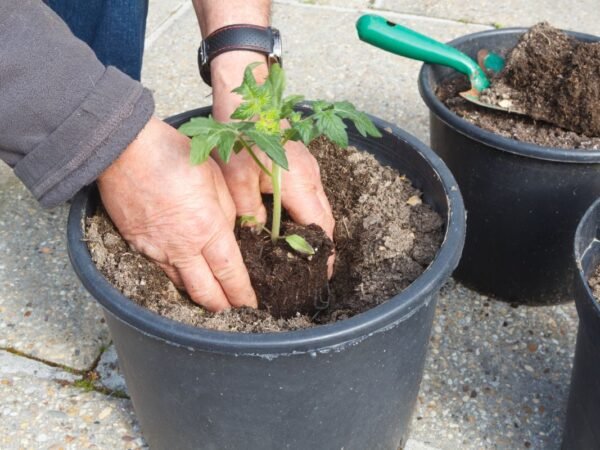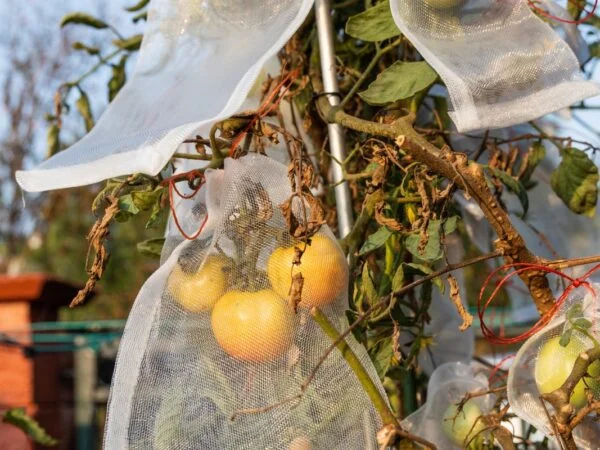Looking for ways to preserve cherry tomatoes? Freezing is the ultimate method for canning these juicy gems. Not only does freezing offer a simple solution for excess cherry tomato harvests, but it also extends their shelf life in the fridge. With the right technique, you can lock in the flavors and nutrients of these vibrant red beauties. Start your flavorful journey with frozen cherry tomatoes today!
How to Freeze Cherry Tomatoes in 3 Simple Steps
Freezing cherry tomatoes is a great way to preserve their flavor and extend their shelf life. Whether you have an abundance of cherry tomatoes from your garden or found a great deal at the farmers market, freezing them allows you to enjoy their deliciousness all year round. Follow these easy steps to quickly and efficiently freeze your cherry tomatoes.
Step 1: Preparing the Cherry Tomatoes
To ensure the best results when freezing cherry tomatoes, it's essential to prepare them properly. Start by washing the tomatoes thoroughly under cool running water. Remove any stems or leaves attached to the fruits. Then, store them in a fridge or garden to keep them fresh. Don't forget to share your frozen tomato recipe on Pinterest or Facebook!
Next, make sure your cherry tomatoes are dry before proceeding with freezing. You can gently pat them dry with a clean kitchen towel or allow them to air dry on a paper towel for a few minutes.
Step 2: Freezing the Cherry Tomatoes
Once your cherry tomatoes are prepped and dry, it's time to freeze them. There are two main methods you can choose from:
- Whole Cherry Tomatoes: If you prefer using whole frozen cherry tomatoes in your recipes, this method is ideal. Simply place the dry cherry tomatoes on a baking sheet lined with parchment paper, making sure they don't touch each other. Pop the baking sheet into the freezer and leave it there until the tomatoes are completely frozen—usually takes about three hours. Once frozen solid, transfer the individual cherry tomatoes into freezer-safe bags or containers for long-term storage.
- Pureed Cherry Tomatoes: Pureeing your cherry tomatoes before freezing allows for more versatility in using them later on—for sauces, soups, and stews, for example. Begin by blending washed and dried cherry tomatoes in a food processor until smooth consistency is achieved. Pour the puree into ice cube trays or silicone molds for convenient portioning later on. Place the trays in the freezer until solidly frozen, then transfer the tomato cubes into freezer bags or containers.
Step 3: Storing and Using Frozen Cherry Tomatoes
Proper storage is crucial to maintain the quality of your frozen cherry tomatoes. Make sure to label your freezer bags or containers with the date of freezing for easy organization. When stored at 0°F (-18°C) or below, frozen cherry tomatoes can last up to six months without significant loss in flavor.
When it's time to use your frozen cherry tomatoes, there's no need to thaw them beforehand if you're incorporating them into cooked dishes like sauces or stews. Simply add them directly from the freezer and allow them to cook while imparting their vibrant taste.
For recipes that require defrosted cherry tomatoes, place the desired amount in a bowl and let them thaw in the refrigerator overnight. Once defrosted, they might lose some firmness but will retain their delightful flavor.
Mastering the art of freezing cherry tomatoes opens up a world of culinary possibilities. Whether you choose whole frozen tomatoes or pureed cubes, these simple techniques ensure that your frozen harvest retains its flavor and texture throughout the year. So go ahead and freeze those juicy cherries—your future self will thank you!
Shelf Life of Frozen Tomatoes: Longevity Explained
Understanding the Longevity of Frozen Cherry Tomatoes
Have you ever wondered how long your frozen cherry tomatoes will last in storage? Well, let's dive into the fascinating world of frozen tomatoes and explore their shelf life. Freezing is a popular preservation method that allows us to enjoy the delicious taste of fresh produce even when it's out of season. But how long can we expect our frozen cherry tomatoes to remain tasty and safe to eat?
Factors Affecting the Shelf Life
Several factors come into play when determining the longevity of frozen tomatoes. Firstly, the quality of the tomatoes before freezing plays a significant role. It is essential to use ripe, blemish-free cherry tomatoes for freezing as any imperfections or overripe fruits may affect their shelf life negatively.
The packaging and storage conditions are equally crucial. To ensure maximum longevity, it is recommended to store your frozen cherry tomatoes in airtight containers or freezer bags. This prevents moisture loss and protects them from freezer burn, maintaining their flavor and texture for an extended period.
Temperature fluctuations can also impact the shelf life of frozen tomatoes. Ideally, they should be stored at a constant temperature below 0°F (-18°C) to minimize any potential deterioration.
Properly Storing for Maximum Longevity
To get the most out of your frozen cherry tomatoes, follow these tips on proper storage:
- Wash and dry: Before freezing, make sure to wash your cherry tomatoes thoroughly and pat them dry with a paper towel.
- Remove stems: Remove any stems or leaves attached to the cherry tomatoes as they can contribute to excess moisture during freezing.
- Flash freeze: Place individual cherry tomatoes on a baking sheet lined with parchment paper and freeze them individually for about an hour until firm. This prevents them from sticking together during long-term storage.
- Airtight containers: Transfer the flash-frozen tomatoes into airtight containers or freezer bags, removing as much air as possible before sealing them tightly.
- Label and date your tomato sauce containers: Don't forget to label the containers with the date of freezing, ensuring you can keep track of their freshness.
Determining Safety for Consumption
While frozen cherry tomatoes can maintain their quality for an extended period, it is essential to know how to determine if they are still safe to eat. Here's what you need to consider:
- Appearance: If the cherry tomatoes appear discolored, mushy, or have ice crystals forming on them, it's an indication that they may have deteriorated and should be discarded.
- Smell test: Give your frozen cherry tomatoes a sniff. If they emit an unpleasant odor or smell off, it's best not to consume them.
- Taste test: When in doubt about freezing tomatoes, try a small portion of the thawed tomato. If freezing tomatoes tastes strange or has an unusual texture, it's better to err on the side of caution and dispose of them.
By following these guidelines for proper storage and determining safety for consumption, you can enjoy your frozen cherry tomatoes for up to 12 months without compromising taste or quality.
So next time you freeze those vibrant red cherry tomatoes at their peak ripeness, rest assured knowing that with proper storage techniques and regular checks for freshness, they'll be ready to add that burst of flavor to your favorite dishes whenever you desire!
Freezing Methods: Whole Tomatoes with or without Peels
Freezing cherry tomatoes is a great way to preserve their freshness and enjoy them throughout the year. Whether you prefer to freeze them with or without peels, there are different methods available that can cater to your specific needs and preferences.
Freezing Whole Tomatoes with Peels
One option for freezing cherry tomatoes is to keep the peels intact. This method allows you to retain the natural protective layer of the fruit, which helps maintain its shape during freezing. Here are some points to consider when opting for this approach:
- Convenience: Freezing whole tomatoes with peels requires minimal preparation. You can simply wash them thoroughly and pat them dry before placing them in a freezer-safe container or bag.
- Versatility: Frozen cherry tomatoes with peels can be used in various dishes such as soups, stews, sauces, or roasted vegetables. The skins add an extra burst of flavor and texture to these recipes.
- Ease of Use: When you need a handful of cherry tomatoes for a recipe, it's effortless to grab a few from the freezer without any additional steps like peeling.
However, there are some downsides to freezing whole cherry tomatoes with their peels:
- Texture: The skins may become slightly tougher after freezing, which could affect the overall texture of certain dishes.
- Peeling Difficulty: If you plan on using frozen cherry tomatoes in recipes where peeled fruits are preferred, such as salads or salsas, removing the skins after thawing might be challenging due to their softness.
Freezing Whole Tomatoes without Peels
If you prefer not having tomato peels in your frozen fruits or find it easier for certain recipes, you can opt to freeze cherry tomatoes without their skins. Here's what you need to know about this method:
- Enhanced Texture: Without the peels, frozen cherry tomatoes tend to have a smoother texture when thawed and used in dishes.
- Ease of Peeling: If you plan on using the tomatoes in recipes that require peeled fruits, like salads or salsas, removing the skin is much simpler after they have been frozen without it.
- Uniform Appearance: Some people prefer the appearance of peeled cherry tomatoes in their dishes for aesthetic reasons.
However, there are a few considerations when freezing whole cherry tomatoes without peels:
- Preparation Time: Peeling each tomato individually before freezing can be time-consuming, especially if you have a large batch.
- Loss of Flavor: Removing the peels may result in a slight loss of flavor as they contribute to the overall taste profile of the fruit.
Tips and Techniques for Freezing Cherry Tomatoes
Selecting Ripe, High-Quality Cherries
Selecting ripe and high-quality cherries for tomato sauce is crucial. Look for cherries that are firm, plump, and vibrant in color. Avoid any overripe or bruised ones as they may not freeze well. Opting for locally grown or organic cherries can ensure better flavor and quality for your tomato sauce.
Properly Washing and Drying
Before freezing your cherry tomatoes, it's essential to wash them thoroughly to remove any dirt or pesticides. Start by rinsing them under cool running water. Gently rub each tomato with your fingers to clean its surface. For stubborn dirt, you can use a soft brush.
Once the cherries are clean, make sure to dry them completely. Excess moisture can lead to freezer burn or ice crystals during storage. Place the washed cherries on a clean kitchen towel or paper towels and gently pat them dry.
Preventing Freezer Burn and Maintaining Optimal Quality
Freezer burn can negatively impact the texture and taste of your frozen cherry tomatoes. To prevent this, it's vital to store them properly. Here are some techniques you can follow:
- Flash-Freezing: Lay the washed and dried cherry tomatoes in a single layer on a baking sheet lined with parchment paper. Place the tray in the freezer for about an hour until the cherries are partially frozen. Then transfer them into airtight freezer bags or containers.
- Blanching: Blanching is another effective method for preserving cherry tomatoes' quality before freezing them. Bring a pot of water to boil and prepare an ice bath simultaneously—a bowl filled with cold water and ice cubes nearby. Drop the cherry tomatoes into boiling water for about 30 seconds, then quickly transfer them into the ice bath using a slotted spoon or strainer. After cooling down for a few minutes, drain the tomatoes and pat them dry before freezing.
Additional Tricks for Enhanced Preservation Results
Apart from the basic techniques, there are a few additional tricks you can try to enhance the preservation of your cherry tomatoes:
- Remove Stems: Before freezing, remove the stems from each cherry tomato. This will make it easier to use them in recipes later on.
- Pre-freeze Individual Portions: If you plan to use cherry tomatoes in specific quantities, consider pre-freezing them in individual portions. Place a desired amount of cherry tomatoes in small freezer bags or containers so that you can easily grab a portion when needed.
- Label and Date: Don't forget to label your frozen cherry tomatoes with the date of freezing. This will help you keep track of their freshness and usage.
By following these tips and techniques, you can ensure that your frozen cherry tomatoes retain their delicious flavor and texture for an extended period. Whether you're using them in sauces, salads, or other dishes, having a stash of frozen cherries will provide convenience while preserving their natural goodness.
Packaging Options: Bags or Containers for Freezing
One important decision to make is how to package them. The choice between using bags or containers depends on your specific storage needs and preferences.
Bags for Freezing Cherry Tomatoes
Using bags for freezing cherry tomatoes offers several benefits. First, bags are space-efficient and can easily fit into any freezer compartment. They are also more flexible than containers, allowing you to stack them neatly without taking up too much room.
To freeze cherry tomatoes in bags:
- Wash the tomatoes thoroughly and pat them dry.
- Place the tomatoes in a resealable plastic bag.
- Remove as much air as possible from the bag before sealing it tightly.
- Label the bag with the date of freezing.
However, there are a few drawbacks to consider when using bags for freezing cherry tomatoes. Bags may not provide as much protection against freezer burn compared to airtight containers. If not sealed properly, they may allow air or moisture to enter, compromising the quality of your frozen tomatoes.
Containers for Freezing Cherry Tomatoes
Containers offer their own set of advantages. Airtight containers provide better protection against freezer burn by minimizing exposure to air and moisture. They also keep the tomatoes well-organized and prevent them from getting crushed during storage.
To freeze cherry tomatoes in containers:
- Select an airtight container suitable for freezing.
- Wash and dry the cherry tomatoes.
- Place them in the container without overcrowding.
- Seal the container tightly.
- Label the container with the date of freezing.
While containers offer superior protection, they do require more freezer space compared to bags. Moreover, the rigid structure of containers may limit your ability to stack them efficiently.
Packaging Materials and Organization
When choosing packaging materials for freezing cherry tomatoes, opt for options that are safe and effective. Both bags and containers made of food-grade plastic are suitable choices. Ensure that they are free from any harmful chemicals that could potentially leach into your tomatoes.
To keep your frozen cherry tomato packages organized:
- Label each package with the date of freezing to ensure you use the oldest ones first.
- Consider sorting them by variety or intended use (e.g., salads, dressings) for easy retrieval.
- Keep an inventory list or log to track the content and quantity of each package.
Expert Advice: Extending the Shelf Life of Fresh Tomatoes
Fresh tomatoes are a delightful addition to any meal, but they can quickly lose their freshness if not stored properly. To help you make the most of your fresh cherry tomatoes and extend their shelf life, we have gathered some expert tips and techniques. By following these guidelines, you can ensure that your tomatoes stay fresher for longer, reducing waste and maximizing flavor.
Proper Storage Techniques
One crucial aspect of prolonging the shelf life of fresh tomatoes is storing them correctly. Here are some tips to keep in mind:
- Refrigeration: While refrigerating tomatoes may seem like an obvious choice, it's important to note that chilling can affect their taste and texture. If you prefer the firmness of chilled tomatoes, store them in the fridge for up to five days.
- Room Temperature Storage: For optimal flavor and juiciness, storing fresh cherry tomatoes at room temperature is recommended. Find a cool spot away from direct sunlight and place them in a single layer on a countertop or in a shallow bowl.
- Avoid Crowding: Whether refrigerated or stored at room temperature, ensure that your tomatoes have enough space around them to prevent bruising or crushing.
Identifying Signs of Spoilage
To avoid consuming spoiled tomatoes unknowingly, it's essential to know how to identify signs of spoilage:
- Discoloration: Look out for any dark spots or patches on the skin.
- Mold Growth: If you notice fuzzy mold developing on your tomatoes, discard them immediately.
- Unpleasant Odor: A strong unpleasant smell emanating from the tomato indicates spoilage.
- Texture Changes: Excessive softness or extreme firmness are indicators that the tomato has gone bad.
Preventing Waste with Smart Techniques
Nobody likes wasting food, especially. Here are some additional tips to help prevent waste:
- Preserving: If you have an abundance of fresh cherry tomatoes, consider preserving them for future use. One popular method is making tomato sauce or puree that can be frozen and used later in various recipes.
- Herbs and Olive Oil: Enhance the flavor and extend the shelf life of your tomatoes by combining them with herbs like basil or oregano and a drizzle of olive oil. This mixture can be stored in the fridge for a few days, allowing the flavors to meld together beautifully.
- Washing: Only wash your cherry tomatoes right before using them. Excessive moisture can lead to faster spoilage, so it's best to keep them dry until needed.
By following these expert tips on proper storage techniques, identifying signs of spoilage, and preventing waste, you can enjoy fresh cherry tomatoes for longer periods. Remember to experiment with different preservation methods like tomato sauce or herb-infused oils to add variety to your culinary endeavors. With these simple guidelines, you'll never have to worry about wasting those vibrant and flavorful tomatoes again!
Conclusion: How to Freeze Cherry Tomatoes?
Mastering the Art of Freezing Cherry Tomatoes is a simple and effective way to preserve the freshness and flavor of these delightful fruits. By following the steps outlined in this guide, you can ensure that your frozen cherry tomatoes stay delicious for an extended period.
Understanding the shelf life of frozen tomatoes is crucial for maintaining their quality. The longevity explained in this article will help you determine how long you can store your frozen cherry tomatoes without compromising taste or texture.
You have the option to freeze whole tomatoes with or without peels. Both techniques are discussed in detail, allowing you to choose the method that suits your preferences and needs.
To make the most out of freezing cherry tomatoes, we have provided valuable tips and techniques. These suggestions will assist you in achieving optimal results when preparing and storing your frozen tomatoes.
Packaging options play a significant role in preserving the quality of frozen cherry tomatoes. Whether you opt for bags or containers, we offer insights into both choices so that you can select the most suitable packaging method.
For expert advice on extending the shelf life of fresh tomatoes before freezing, refer back to this guide. Our recommendations will help ensure that your fresh produce lasts longer, giving you more time to enjoy its incredible taste.
In conclusion, mastering the art of freezing cherry tomatoes is a practical skill that allows you to enjoy their deliciousness year-round. By following our step-by-step instructions, understanding shelf life, exploring different freezing methods, implementing useful tips and techniques, choosing appropriate packaging options, and seeking expert advice on extending freshness, you can confidently freeze cherry tomatoes like a pro!
FAQs: How to Freeze Cherry Tomatoes?
Can I freeze cherry tomatoes without blanching them?
Yes! You can freeze cherry tomatoes without blanching them. Simply wash and dry them thoroughly before placing them directly into freezer-safe bags or containers.
How long do frozen cherry tomatoes last?
Frozen cherry tomatoes can last up to 12 months in the freezer if stored properly. However, for the best quality, it is recommended to consume them within 6-8 months.
Can I freeze cherry tomatoes with their stems?
It is advisable to remove the stems before freezing cherry tomatoes. The stems can become tough and unappetizing after freezing.
Can I use frozen cherry tomatoes in salads or salsas?
While frozen cherry tomatoes may not retain their firm texture after thawing, they are still suitable for cooking purposes such as making sauces, soups, or stews. However, they might not be ideal for fresh applications like salads or salsas.
Should I peel cherry tomatoes before freezing?
Peeling cherry tomatoes before freezing is optional. If you prefer a smoother texture in your dishes, blanching and peeling the tomatoes before freezing can be beneficial. However, leaving the skins intact will save time and effort during the freezing process.
These FAQs should help address common concerns and provide useful information for successfully freezing cherry tomatoes.
Image Source: Paid image from CANVA




